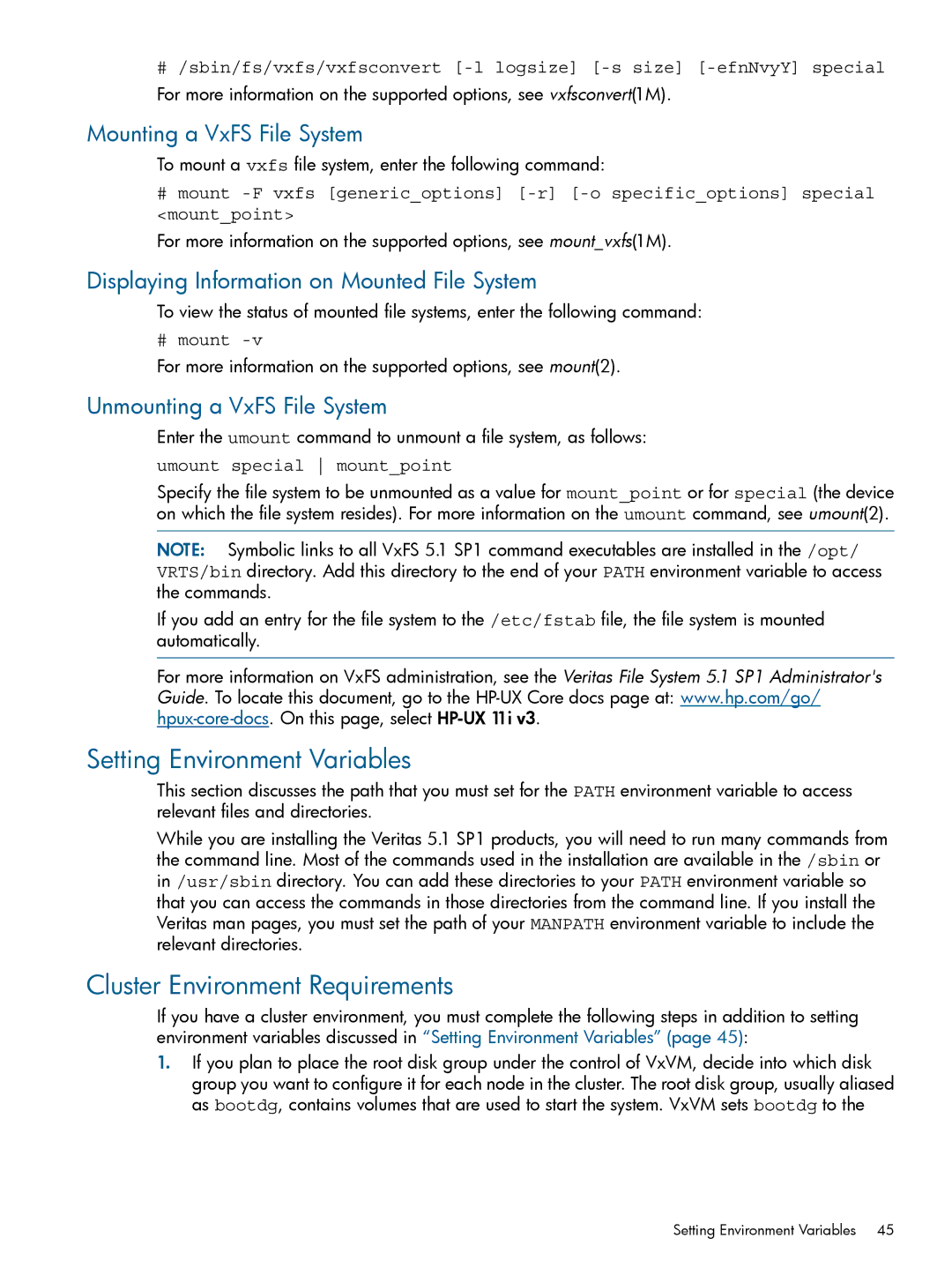
# /sbin/fs/vxfs/vxfsconvert
For more information on the supported options, see vxfsconvert(1M).
Mounting a VxFS File System
To mount a vxfs file system, enter the following command:
#mount
For more information on the supported options, see mount_vxfs(1M).
Displaying Information on Mounted File System
To view the status of mounted file systems, enter the following command:
# mount
For more information on the supported options, see mount(2).
Unmounting a VxFS File System
Enter the umount command to unmount a file system, as follows:
umount special mount_point
Specify the file system to be unmounted as a value for mount_point or for special (the device on which the file system resides). For more information on the umount command, see umount(2).
NOTE: Symbolic links to all VxFS 5.1 SP1 command executables are installed in the /opt/ VRTS/bin directory. Add this directory to the end of your PATH environment variable to access the commands.
If you add an entry for the file system to the /etc/fstab file, the file system is mounted automatically.
For more information on VxFS administration, see the Veritas File System 5.1 SP1 Administrator's Guide. To locate this document, go to the
Setting Environment Variables
This section discusses the path that you must set for the PATH environment variable to access relevant files and directories.
While you are installing the Veritas 5.1 SP1 products, you will need to run many commands from the command line. Most of the commands used in the installation are available in the /sbin or in /usr/sbin directory. You can add these directories to your PATH environment variable so that you can access the commands in those directories from the command line. If you install the Veritas man pages, you must set the path of your MANPATH environment variable to include the relevant directories.
Cluster Environment Requirements
If you have a cluster environment, you must complete the following steps in addition to setting environment variables discussed in “Setting Environment Variables” (page 45):
1.If you plan to place the root disk group under the control of VxVM, decide into which disk group you want to configure it for each node in the cluster. The root disk group, usually aliased as bootdg, contains volumes that are used to start the system. VxVM sets bootdg to the
Setting Environment Variables | 45 |
